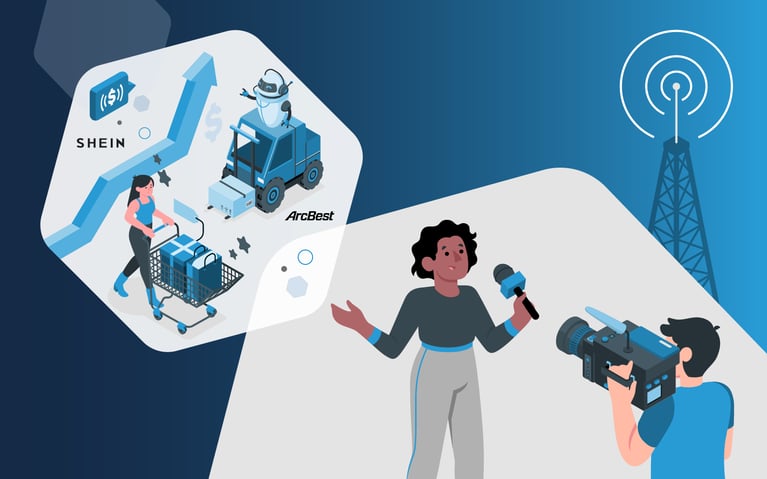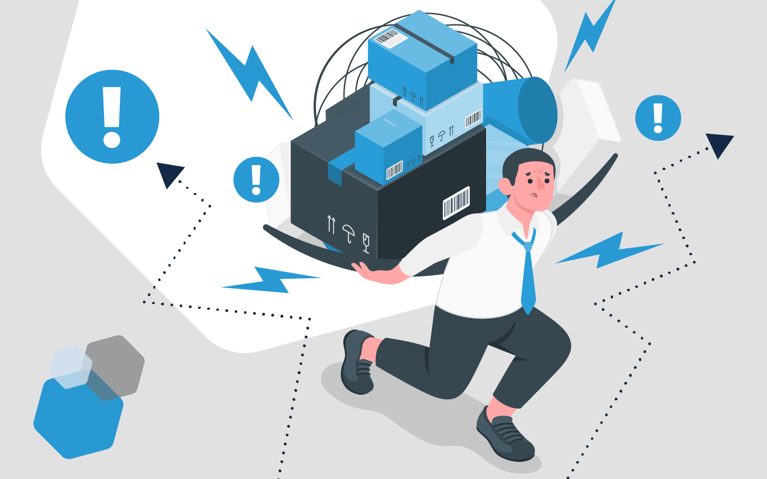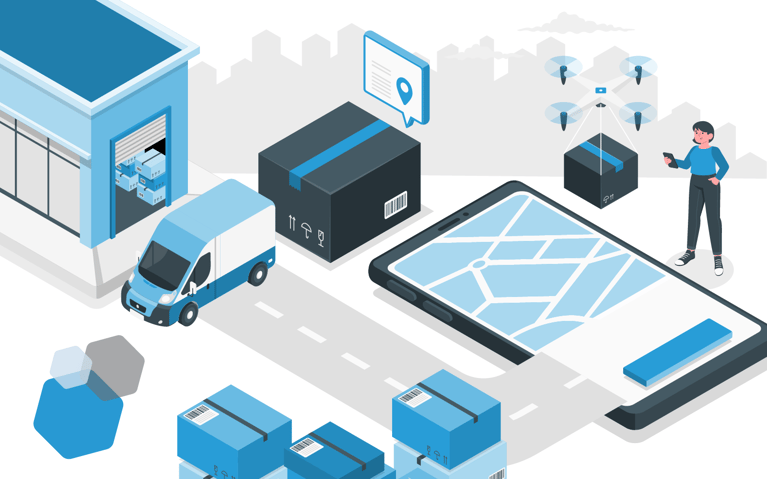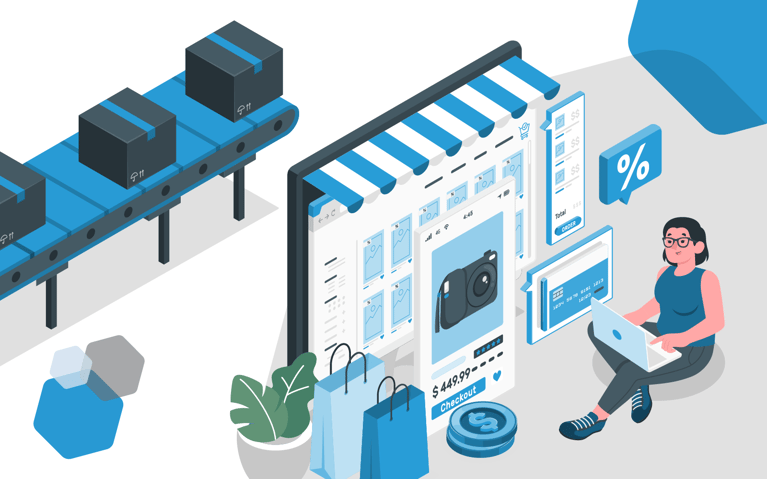When we think about footwear in a fulfillment context, it’s easy to assume that what works for apparel will work just as well for sneakers and sandals. However, footwear fulfillment is a distinct area that requires its own fulfillment strategy–and it’s not as straightforward as you might think.
Getting that pair of shoes to the customer quickly, accurately, and cheaply is a serious undertaking for an ecommerce brand, especially as customer expectations for rapid shipping and delivery continue to rise. If you’re planning to outsource fulfillment, you need to be sure that any prospective 3PL is well-positioned to handle the demands of this product category.
In this blog, we’re diving into the intricacies of footwear fulfillment and what your brand should be looking for in a potential 3PL provider to ensure effective, hassle-free footwear fulfillment services.
What is footwear fulfillment?
Footwear fulfillment refers to the end-to-end process of processing, fulfilling and shipping online orders that involve footwear purchases. The footwear fulfillment process may happen in-house – in the case that an ecommerce brand is using a private warehouse facility – or outsourced to a 3PL who manages order fulfillment and associated services on the business’s behalf.
In sum, footwear fulfillment is far more than just picking the right pair of shoes in the warehouse and sending it to the customer. It also encompasses inventory receiving, SKU management, demand forecasting, returns processing and more. This is why it’s so important to select a third-party provider who has a proven track record at managing footwear fulfillment – not only high-volume SKUs like apparel or accessories.
How does footwear fulfillment differ from apparel fulfillment?
Footwear fulfillment and apparel fulfillment are commonly lumped together in discussions about ecommerce fulfillment because they share many similarities as product categories. Both involve extremely large SKU bases to account for numerous size and color variations, as well as high seasonality, with styles rotating in and out very quickly. However, footwear also boasts other characteristics that make it a unique challenge for fulfillment companies to execute well:
Storage demand
Footwear is much bigger and bulkier than apparel, which can be easily folded to maximize storage space and create better efficiency. In most cases, footwear needs to be stored in a heavy cardboard box that also contains accessories, instructions, warranty information, and so forth. This can make it more challenging to utilize storage space effectively, and may require ecommerce brands to take out more space in a fulfillment center or warehouse to house the amount of inventory they need.
Shipping costs
Some footwear styles, particularly boots and outdoor shoes, are relatively heavy and bulky items to ship when compared with apparel items like t-shirts, shorts and skirts that can fit inside mailer envelopes. This means that brands selling footwear will generally be spending a lot more on shipping and may struggle to lower the DIM weight of their packages, especially if orders are traveling long distances to reach the end customer.
Returns and reconditioning
Like apparel, footwear boasts some of the highest return rates in ecommerce. It’s arguably even more difficult for consumers to assess the likelihood of a good fit ahead of time, as trying on different shoe styles is key to the shopping experience. As a result, footwear is even more prone to practices such as bracketing (buying multiple variations of a product with the intent of returning) and other forms of returns fraud. Moreover, good reconditioning workflows are essential to ensure that returned products have a chance at resale, especially high-end styles that involve materials like leather.
How to choose the right footwear fulfillment provider for your needs: 5 things to look for
Choosing the right fulfillment provider for footwear is crucial as it directly impacts customer satisfaction and loyalty. A reliable provider ensures timely delivery, minimizing shipping errors and returns, which are especially important in the competitive footwear market. By partnering with the right provider, brands can maintain high service standards, enhance the customer experience and drive repeat business. Here are five things to look for when making a decision:
Effective SKU management
Having even just a handful of footwear styles in stock at one time can easily spawn hundreds of unique SKUs, as every size variation also needs a full color range. If you’re a specialist footwear retailer, it’s easily in the thousands. In sum, having access to real-time inventory management and visibility over inventory levels and outstanding orders ensures that you can see how different styles are performing and whether reorder points need to be tweaked to avoid stockouts.
Multiple carrier selection
Footwear can be expensive to ship, so it’s even more important that your fulfillment provider offers you wholesale shipping rates at a range of parcel carriers that correspond with customer needs, including different destinations, preferred shipping speeds and freight types. This ensures you that can always select the optimum shipping option for every order and save precious dollars where it counts the most.
Scalable multi-node fulfillment
As order volumes grow and you find yourself in need of more storage space, you want a 3PL that has you covered. A fulfillment partner who offers a network of nationwide facilities in strategic locations ensures that you will find the ideal home for your footwear merchandise as your brand scales, and never find yourself without the warehouse space you need to meet demand. Best of all, multi-node fulfillment puts your merchandise within the closest possible reach of your customers, shortening delivery timeframes and boosting customer satisfaction.
Custom packaging capabilities
Custom packaging isn’t just important for providing a memorable brand experience; Being able to adjust designs to streamline packaging and decrease parcel size is essential to reduce shipping costs. As bulky merchandise, being able to keep footwear containers as compact as possible is one of the best ways to cut shipping costs and reduce waste. So, finding a 3PL that offers this value-added service is one of the biggest cost reductions for your footwear fulfillment strategy.
A solid return management solution
Considering the high return rates of footwear, it’s important you’re partnering with a 3PL that has an effective workflow for managing returned merchandise. This doesn’t just mean front-end automation to process returns quickly, but having an efficient process that covers what to do when returned footwear arrives back into your warehouse. Does it need reconditioning, repairing or repackaging, or can it go straight back into inventory to be resold? If these processes can’t be actioned quickly, you’re looking at a big pile-up of returned merchandise, and lost opportunities to retain revenue. An effective footwear fulfillment process extends right from the moment inventory is received, all the way to effective cartonization, cost-effective shipping and efficient returns management and inspection to get your merchandise back on the shelf.
The right 3PL for your footwear fulfillment needs
Footwear fulfillment may seem like a non-existent niche in ecommerce fulfillment, but it’s an important consideration to ensure that your footwear merchandise is being handled properly and efficiently. Finding a fulfillment provider who understands the unique demands of this product category isn’t just to save your business a lot of money and hassle; it’s also the pathway to better customer experiences that grow your brand and give you a competitive edge in the marketplace. Contact the ecommerce fulfillment experts at Cart.com today to learn more.
Subscribe to our emails for the latest industry insights!
By entering your email, you agree to receive marketing emails from Cart.com






